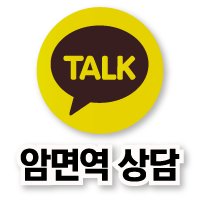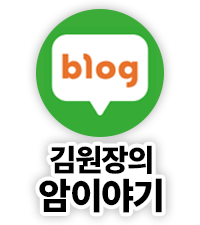Be On The Lookout For: How Evolution Korea Is Taking Over And What You…
페이지 정보
작성자 Randy Key 작성일 25-02-19 20:43 조회 302 댓글 0본문
Evolution Korea
In the debate over evolution, Korean scientists aren't taking their chances. The Society for Textbook Revise has been fighting to eliminate Archaeopteryx, horses and other evolutionist icons from textbooks.
Confucian traditions, 에볼루션 슬롯게임 with their emphasis on success in the world and the high value of education still dominate the culture of the country. However, Korea is in search of an entirely new model of development.
Origins
The development of Iron Age cultures brought more sophisticated states to the Korean Peninsula, like Goguryeo and 무료에볼루션 Baekje. They all had their own distinct cultural style that was influenced from their powerful neighbors. They also adopted aspects of Chinese culture, including Confucianism, Buddhism and shamanism.
Goguryeo was the first of these kingdoms to implement its own system of government on the Korean people. It established a king centered system of governance in the early 2nd Century. Through a series wars it wiped out the factions that were loyal to the Han dynasty from the north of the peninsula and expanded its territory to Manchuria too.
At this time, a regional confederation called Buyeo was formed. In the Samguk yusa of the 13th century, Wang Geon's name was mentioned as the king. Buyeo was later referred to as Goryeo and this is how the name Korea came to be. Goryeo was a thriving commercial state as well as a center of learning. Its inhabitants cultivated crops and raised livestock, such as goats and sheep and they made furs from them too. They wrote poetry and masked dance-dramas such as tallori and sandaenori and also held an annual festival called Yeonggo in December.
Goryeo’s economy was boosted through the brisk trade, which included the Song Dynasty of China. Byeongnando was the gateway to Gaeseong which was the capital of Gaeseong. Traders came from Central Asia, Arabia and Southeast Asia. Some of the items they brought included silk and 무료 에볼루션 슬롯게임 (scientific-programs.science) medicinal herbs.
From around 8,000 BCE the Koreans began establishing permanent settlements and cultivating cereal crops. They also created polished stone tools, pottery and started organising themselves into clan societies. The Neolithic Age continued until the 12th century BC. At this time, Gija, a Shang dynasty prince from China, is said to have introduced high culture to Korea. Until the 20th century many Koreans believed that Dangun and Gija gave Korea its people and their culture as well as their culture.
Functions
Korea's previous model of development, which emphasized state-led capital accumulation, government intervention in industries and business and an explosive growth in its economy and a rapid rise from one of the poorest nations in the world to the ranks of OECD nations in just three years. However, the system was filled with corruption and moral hazard and was unsustainable in a global economy of trade liberalization, liberalization and democratization.
The current crisis has revealed the weaknesses of the previous model, and it is likely that an alternative model will be developed in its place. The chapters 3 and 4 explore the origins of Korea's government and business risk partnership and show how the new economic actors with an desire to maintain this system prevented Korea from adopting fundamental changes. By focusing on corporate governance and financial resource allocation the chapters provide a detailed analysis of the causes of the crisis and provide suggestions to ways of moving forward with reforms.
Chapter 5 examines the possible paths of Korea's development paradigm evolution in the post-crisis period, exploring both the legacies of the past and new developments triggered by the IT revolution and globalization. It also examines the implications of these developments for Korea's political and social structures.
The major finding is that there are many emerging trends that are transforming the nature of power and will affect the future of the country. For instance, despite the fact that political participation is still a major issue in Korea new ways of political activism are able to bypass and challenge political parties, thereby transforming the democratic structure of the country.
Another significant finding is that the power of the Korean elite is not as great as it once was and that a significant portion of society has a sense of being disconnected from the ruling class. This is a sign of the need for more civic involvement and education as well as new ways of power-sharing. The chapter concludes by saying that the success of Korea's new model of development will be determined by the extent to which these trends can be integrated and the willingness of people to make difficult decisions.
Benefits
South Korea has the ninth largest economy in the world and the sixth fastest-growing. It has a growing middle class as well as a strong R&D base that drives innovation. The government has also recently increased its investment in infrastructure projects, to support economic growth and encourage social equity.
In 2008, Lee Myung Bak's administration introduced five indicators of leadership in an attempt to create an economic system that was focused on changes and practicality. The administration made efforts to streamline government operations, privatize public corporations equipped with more efficiency, and reform administrative regulations.
Since the closing of the Cold War, South Korea has been pursuing a strategy of economic integration with the rest of the region and even further. Exports of high-tech consumer electronics and advanced manufacturing technologies have become a major source of income. The government is also promoting Saemaeul Undong, 에볼루션게이밍 which is a new community movement, to transform the country from one which is primarily agricultural to one that is focused on manufacturing.
The country also has a high standard of living and offers many benefits for employees, including pregnancy leave and job security. Employers are also required to subscribe to accident insurance, which covers the costs associated with work-related illness or injury. It is also a common practice for companies provide private medical insurance to protect against illnesses that are that are not covered by National Health Insurance.
In the end, South Korea has been considered a model of prosperity for many emerging countries around the world. The global financial crisis of 1997, which swept Asia and the world, challenged this notion. The crisis shattering the conventional wisdom about Asia's miraculous economies and caused a fundamental rethinking of the role of the state in regulating risky private economic activities.
It seems that Korea's fate is not certain in the aftermath of these changes. A new generation of leaders have taken on the image of an "strong leader" and begun to experiment in market-oriented policies. On the other hand, a strong domestic power base has made it difficult to make fundamental change.
Disadvantages
The reemergence and influence of creationists is a major hurdle for Korean science in its efforts to educate the public on evolution. While the majority of Koreans are in favor of teaching evolution in schools a small group of creationist groups -- led by a microbiologist called Bun-Sam Lim who is the president of the Society for Textbook Revise (STR)--is advocating for its removal from textbooks. STR believes that teaching evolution promotes "atheist materialism" and paints an "unhopeful" worldview for students, which can cause students to lose faith in humanity.
The causes of anti-evolutionist sentiments are complex and diverse. Some researchers suggest that it is due to religious belief, while others point to an increasing prevalence of anti-intellectualism, which has been exacerbated by growing political elite fragmentation along ideologies, regions, class, and gender. The one-sided populism, backed by powerful conservative think organizations, business interests and other influential organizations, has also exacerbated public mistrust of the scientific community.
In the end the study's findings regarding the widespread vulnerability highlight the need for targeted policies that can reduce them before they occur. These insights will help Seoul to reach its goal of becoming an urban landscape that is cohesive.
In the COVID-19 case, pinpointing the most vulnerable neighborhoods and their inhabitants is essential for the development of specific, compassionate policies to improve their lives and security. For instance, the extreme effect of the pandemic on Jjokbangs reflects socio-economic disparities which can increase the vulnerability to natural and man-made catastrophes.
To overcome this, South Korea requires a more inclusive and diverse civil society that brings together all communities to address the most pressing issues of the city. This requires a radical change in the structure and power of institutional politics. The Blue House is able to mobilise a large bureaucracy and strategically leverage the Supreme Prosecutor's Office and intelligence bureau, which all are not subject to oversight by the parliamentary bodies or independent inspection agencies. This gives the president enormous leverage to impose his or her views on the rest of the nation. This is a recipe that can lead stagnation and polarization of the country.
In the debate over evolution, Korean scientists aren't taking their chances. The Society for Textbook Revise has been fighting to eliminate Archaeopteryx, horses and other evolutionist icons from textbooks.
Confucian traditions, 에볼루션 슬롯게임 with their emphasis on success in the world and the high value of education still dominate the culture of the country. However, Korea is in search of an entirely new model of development.
Origins
The development of Iron Age cultures brought more sophisticated states to the Korean Peninsula, like Goguryeo and 무료에볼루션 Baekje. They all had their own distinct cultural style that was influenced from their powerful neighbors. They also adopted aspects of Chinese culture, including Confucianism, Buddhism and shamanism.
Goguryeo was the first of these kingdoms to implement its own system of government on the Korean people. It established a king centered system of governance in the early 2nd Century. Through a series wars it wiped out the factions that were loyal to the Han dynasty from the north of the peninsula and expanded its territory to Manchuria too.
At this time, a regional confederation called Buyeo was formed. In the Samguk yusa of the 13th century, Wang Geon's name was mentioned as the king. Buyeo was later referred to as Goryeo and this is how the name Korea came to be. Goryeo was a thriving commercial state as well as a center of learning. Its inhabitants cultivated crops and raised livestock, such as goats and sheep and they made furs from them too. They wrote poetry and masked dance-dramas such as tallori and sandaenori and also held an annual festival called Yeonggo in December.
Goryeo’s economy was boosted through the brisk trade, which included the Song Dynasty of China. Byeongnando was the gateway to Gaeseong which was the capital of Gaeseong. Traders came from Central Asia, Arabia and Southeast Asia. Some of the items they brought included silk and 무료 에볼루션 슬롯게임 (scientific-programs.science) medicinal herbs.
From around 8,000 BCE the Koreans began establishing permanent settlements and cultivating cereal crops. They also created polished stone tools, pottery and started organising themselves into clan societies. The Neolithic Age continued until the 12th century BC. At this time, Gija, a Shang dynasty prince from China, is said to have introduced high culture to Korea. Until the 20th century many Koreans believed that Dangun and Gija gave Korea its people and their culture as well as their culture.
Functions
Korea's previous model of development, which emphasized state-led capital accumulation, government intervention in industries and business and an explosive growth in its economy and a rapid rise from one of the poorest nations in the world to the ranks of OECD nations in just three years. However, the system was filled with corruption and moral hazard and was unsustainable in a global economy of trade liberalization, liberalization and democratization.
The current crisis has revealed the weaknesses of the previous model, and it is likely that an alternative model will be developed in its place. The chapters 3 and 4 explore the origins of Korea's government and business risk partnership and show how the new economic actors with an desire to maintain this system prevented Korea from adopting fundamental changes. By focusing on corporate governance and financial resource allocation the chapters provide a detailed analysis of the causes of the crisis and provide suggestions to ways of moving forward with reforms.
Chapter 5 examines the possible paths of Korea's development paradigm evolution in the post-crisis period, exploring both the legacies of the past and new developments triggered by the IT revolution and globalization. It also examines the implications of these developments for Korea's political and social structures.
The major finding is that there are many emerging trends that are transforming the nature of power and will affect the future of the country. For instance, despite the fact that political participation is still a major issue in Korea new ways of political activism are able to bypass and challenge political parties, thereby transforming the democratic structure of the country.
Another significant finding is that the power of the Korean elite is not as great as it once was and that a significant portion of society has a sense of being disconnected from the ruling class. This is a sign of the need for more civic involvement and education as well as new ways of power-sharing. The chapter concludes by saying that the success of Korea's new model of development will be determined by the extent to which these trends can be integrated and the willingness of people to make difficult decisions.
Benefits
South Korea has the ninth largest economy in the world and the sixth fastest-growing. It has a growing middle class as well as a strong R&D base that drives innovation. The government has also recently increased its investment in infrastructure projects, to support economic growth and encourage social equity.
In 2008, Lee Myung Bak's administration introduced five indicators of leadership in an attempt to create an economic system that was focused on changes and practicality. The administration made efforts to streamline government operations, privatize public corporations equipped with more efficiency, and reform administrative regulations.
Since the closing of the Cold War, South Korea has been pursuing a strategy of economic integration with the rest of the region and even further. Exports of high-tech consumer electronics and advanced manufacturing technologies have become a major source of income. The government is also promoting Saemaeul Undong, 에볼루션게이밍 which is a new community movement, to transform the country from one which is primarily agricultural to one that is focused on manufacturing.
The country also has a high standard of living and offers many benefits for employees, including pregnancy leave and job security. Employers are also required to subscribe to accident insurance, which covers the costs associated with work-related illness or injury. It is also a common practice for companies provide private medical insurance to protect against illnesses that are that are not covered by National Health Insurance.
In the end, South Korea has been considered a model of prosperity for many emerging countries around the world. The global financial crisis of 1997, which swept Asia and the world, challenged this notion. The crisis shattering the conventional wisdom about Asia's miraculous economies and caused a fundamental rethinking of the role of the state in regulating risky private economic activities.
It seems that Korea's fate is not certain in the aftermath of these changes. A new generation of leaders have taken on the image of an "strong leader" and begun to experiment in market-oriented policies. On the other hand, a strong domestic power base has made it difficult to make fundamental change.
Disadvantages
The reemergence and influence of creationists is a major hurdle for Korean science in its efforts to educate the public on evolution. While the majority of Koreans are in favor of teaching evolution in schools a small group of creationist groups -- led by a microbiologist called Bun-Sam Lim who is the president of the Society for Textbook Revise (STR)--is advocating for its removal from textbooks. STR believes that teaching evolution promotes "atheist materialism" and paints an "unhopeful" worldview for students, which can cause students to lose faith in humanity.
The causes of anti-evolutionist sentiments are complex and diverse. Some researchers suggest that it is due to religious belief, while others point to an increasing prevalence of anti-intellectualism, which has been exacerbated by growing political elite fragmentation along ideologies, regions, class, and gender. The one-sided populism, backed by powerful conservative think organizations, business interests and other influential organizations, has also exacerbated public mistrust of the scientific community.
In the end the study's findings regarding the widespread vulnerability highlight the need for targeted policies that can reduce them before they occur. These insights will help Seoul to reach its goal of becoming an urban landscape that is cohesive.
In the COVID-19 case, pinpointing the most vulnerable neighborhoods and their inhabitants is essential for the development of specific, compassionate policies to improve their lives and security. For instance, the extreme effect of the pandemic on Jjokbangs reflects socio-economic disparities which can increase the vulnerability to natural and man-made catastrophes.
To overcome this, South Korea requires a more inclusive and diverse civil society that brings together all communities to address the most pressing issues of the city. This requires a radical change in the structure and power of institutional politics. The Blue House is able to mobilise a large bureaucracy and strategically leverage the Supreme Prosecutor's Office and intelligence bureau, which all are not subject to oversight by the parliamentary bodies or independent inspection agencies. This gives the president enormous leverage to impose his or her views on the rest of the nation. This is a recipe that can lead stagnation and polarization of the country.









